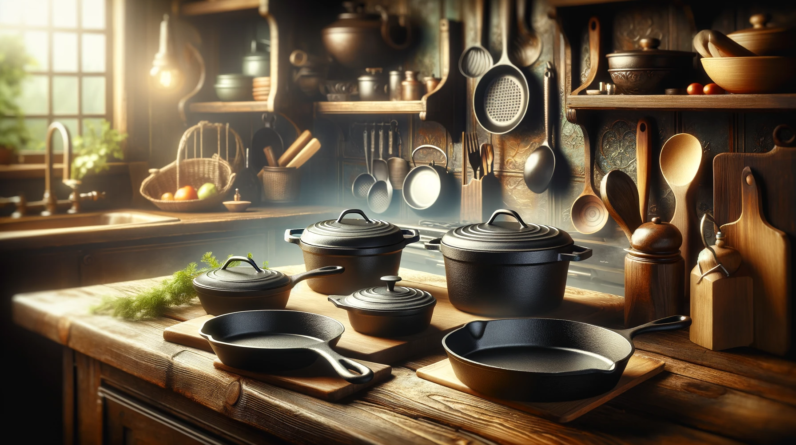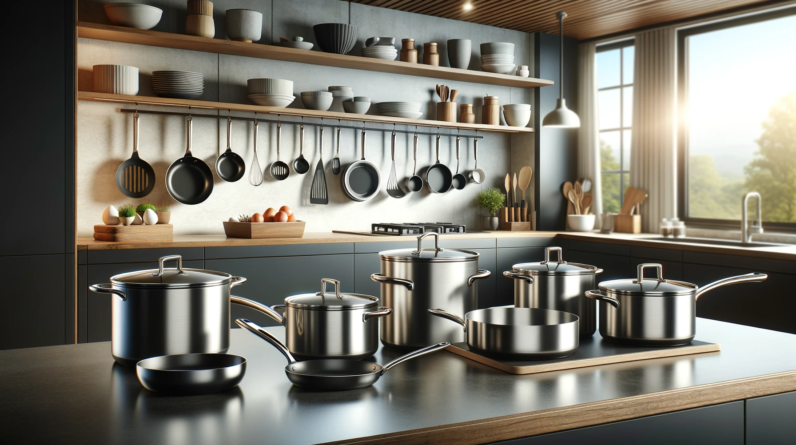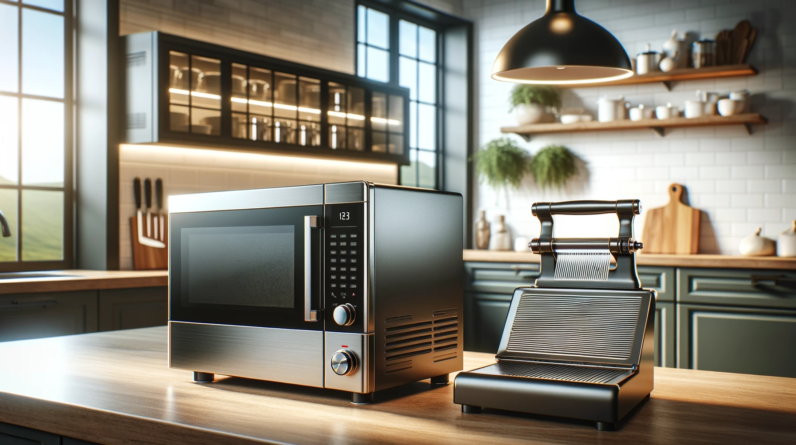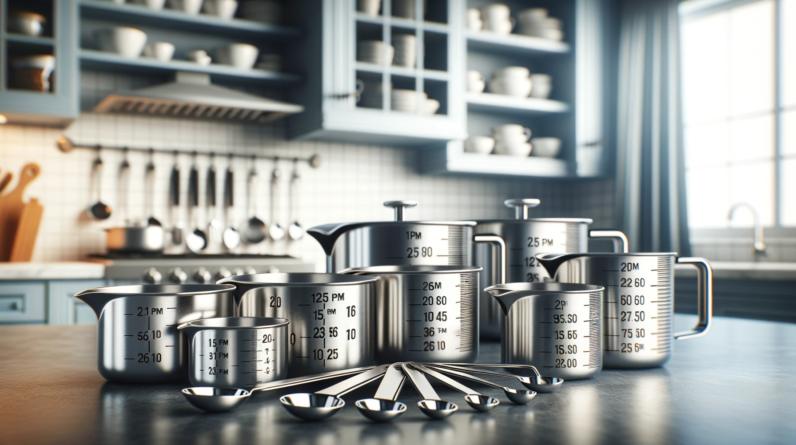
Disclaimer: This post may contain affiliate links. As an Amazon Associate, we earn from qualifying purchases.
Imagine stepping into a modern kitchen with its sleek appliances and gadgets, but have you ever wondered about the humble beginnings of the tools that you use every day? From the first scrape of a stone against a hot pan to the evolution of sophisticated utensils, the world of kitchen tools is fascinating.
In this post, we will explore the origins of these essential implements and discover what is truly the oldest kitchen tool. Get ready to embark on a journey through culinary history and uncover the surprising history of the tool that has been with us since the dawn of time.
Introduction
 Welcome to the fascinating world of kitchen tools! From the prehistoric times to the modern era, humans have always found innovative ways to prepare food. In this comprehensive article, we will explore the evolution of kitchen tools throughout history.
Welcome to the fascinating world of kitchen tools! From the prehistoric times to the modern era, humans have always found innovative ways to prepare food. In this comprehensive article, we will explore the evolution of kitchen tools throughout history.
We will journey through different eras, discussing the tools that were used, and how they contributed to the development of culinary practices. So fasten your seatbelts and get ready to discover the oldest kitchen tools that have shaped the way we cook and eat!
Prehistoric Times
In prehistoric times, our ancestors relied on simple yet effective tools to prepare their meals.
One of the earliest kitchen tools discovered from this period is the stone hammer.
Made by chipping away at rocks, these hammers were used for pounding and crushing various food items.
From breaking open nuts to tenderizing meat, the stone hammer was a versatile tool that revolutionized early cooking techniques.
Another essential kitchen tool from prehistoric times was the bowl. Made from materials such as clay or wood, these bowls were used for a myriad of purposes. They held ingredients, served as cooking vessels, and were even used for storing and preserving food.
The invention of the bowl marked a significant milestone in the evolution of kitchen tools, as it allowed for the convenient handling and manipulation of food items.
Mortars and pestles also played a vital role in prehistoric cooking. These tools, made from stone or wood, were used for grinding and pulverizing ingredients. Whether it was crushing herbs and spices or making pastes and sauces, mortars and pestles were indispensable to early cooks. The simplicity and effectiveness of these tools laid the foundation for more advanced grinding stones and food processors in later eras.
Ancient Civilizations
As civilizations flourished, so did the sophistication of kitchen tools. In ancient times, knives became an essential tool for food preparation. Made from stone, bone, or metal, these knives were versatile and allowed for more precise cutting and slicing.
With the advent of metalworking, knives evolved into sharper and more durable instruments, making meal preparation a breeze for ancient cooks.
Grinding stones were another crucial kitchen tool during ancient times. Typically made of rough stones or querns, these tools were used to grind grains and seeds into flour for baking bread and making porridge. The evolution of grinding stones allowed for more efficient milling, leading to the production of finer flour and improved culinary techniques.
Spoons also made their debut during ancient civilizations. Initially crafted from shells, shells from gourds, or carved from wood, spoons were primarily used for scooping and stirring food. They provided an easy way to consume liquid-based meals, and their invention marked an important step in the development of table manners and dining etiquette.
Medieval Period
The medieval period brought about further advancements in kitchen tools. Cooking pots, also known as cauldrons, were widely used during this time. Made from materials such as cast iron or copper, these pots allowed for the preparation of large and hearty stews and soups.
Their durability and heat-retaining properties made them an indispensable tool in medieval kitchens.
Colanders also made an appearance during the medieval period. These perforated bowls with handles were used for straining liquids and separating solid ingredients from soups and sauces. Colanders enabled cooks to achieve smoother and more refined textures in their dishes, adding a touch of elegance and sophistication to medieval cuisine.
Chopping boards became popular during the Middle Ages, providing a stable and clean surface for cutting and slicing ingredients. These wooden boards protected countertops and prevented cross-contamination, ensuring hygienic food preparation.
As culinary techniques evolved, chopping boards became an essential tool in every kitchen, setting the stage for professional chefs and home cooks alike. 
Renaissance and Enlightenment Era
The Renaissance and Enlightenment era brought about a wave of innovation in kitchen tools. One significant invention during this period was the fork. Originally invented in ancient Greece, forks gained popularity during the Renaissance and Enlightenment era.
Using a fork allowed for more precise handling of food and facilitated an elegant dining experience. However, it is worth noting that forks were initially met with resistance and were even considered an unnecessary extravagance by some.
Whisks also entered the culinary scene during this era. Made from natural materials such as twigs or feathers, these tools were used for beating and mixing ingredients together. The invention of the whisk revolutionized baking and cooking techniques, allowing for lighter and airier textures in pastries and sauces.
Accurate measurements became increasingly important in cooking during the Renaissance and Enlightenment era. As a result, the development of measuring tools, such as measuring cups and spoons, became crucial.
These tools standardized recipes and ensured precise ingredient proportions, leading to more consistent and reliable results in the culinary world.
Industrial Revolution
The Industrial Revolution marked a turning point in the history of kitchen tools. With the advent of manufacturing processes and the use of new materials, a range of innovative tools emerged. The introduction of cooking ranges, powered by gas or electricity, transformed the way food was cooked.
Previously, open fires had been the primary method of cooking, but cooking ranges provided a more controlled and efficient heat source.
 Steamers also became popular during the Industrial Revolution. These vessels, equipped with a perforated base or trays, allowed for the steaming of food items such as vegetables and fish. Steamers retained the natural flavors and nutrients of the food, resulting in healthier and more vibrant dishes.
Steamers also became popular during the Industrial Revolution. These vessels, equipped with a perforated base or trays, allowed for the steaming of food items such as vegetables and fish. Steamers retained the natural flavors and nutrients of the food, resulting in healthier and more vibrant dishes.
The introduction of steamers opened up a whole new world of culinary possibilities.
Can openers were another groundbreaking innovation of the Industrial Revolution. With the rise of canned food, opening cans became a regular task in the kitchen.
Can openers provided a quick and efficient way to access the contents of the cans, making meal preparation more convenient than ever before.
Victorian Era
The Victorian era witnessed the birth of several indispensable kitchen tools that continue to be used to this day. Stand mixers, also known as cake mixers, made their appearance during this era. These mechanical wonders revolutionized baking, allowing for effortless mixing of ingredients.
Stand mixers paved the way for the creation of fluffy cakes, creamy frostings, and perfectly whipped creams.
 Rolling pins also became a staple tool in Victorian kitchens. Made from wood or marble, these cylindrical tools were used to shape and flatten dough for pastries, cookies, and bread. The introduction of rolling pins made it easier for home cooks to achieve consistent thickness and uniform shapes in their baked goods.
Rolling pins also became a staple tool in Victorian kitchens. Made from wood or marble, these cylindrical tools were used to shape and flatten dough for pastries, cookies, and bread. The introduction of rolling pins made it easier for home cooks to achieve consistent thickness and uniform shapes in their baked goods.
Spatulas, with their flat, flexible heads, became popular during the Victorian era. These handy tools were used for flipping, lifting, and spreading ingredients during cooking and baking. Spatulas provided precision and finesse in food preparation, allowing cooks to effortlessly maneuver delicate dishes without compromising presentation.
20th Century Innovations
The 20th century witnessed an explosion of kitchen tool innovations that transformed the way we cook. Blenders, also known as mixers or liquidizers, appeared during this era, making it possible to create smooth purees, creamy smoothies, and homemade sauces.
 revolutionized the blending process, reducing the manual effort required and saving time in the kitchen.
revolutionized the blending process, reducing the manual effort required and saving time in the kitchen.
The introduction of microwaves in the 20th century brought convenience and speed to cooking. These countertop appliances allowed for quick heating and cooking of food items, surpassing traditional methods such as stovetops and ovens.
Microwaves revolutionized the way we approach meal preparation, making it easier than ever to enjoy hot meals in a matter of minutes.
Food processors also emerged as a game-changing kitchen tool in the 20th century. These versatile appliances revolutionized food preparation by performing tasks such as chopping, slicing, and shredding with ease. Food processors eliminated the need for extensive manual labor, allowing for faster and more efficient meal preparation.
Modern Times
In modern times, kitchen tools continue to evolve and adapt to the fast-paced lifestyles of individuals. Air fryers, a recent innovation, have gained popularity for their ability to create crispy and delicious dishes with less oil. These countertop appliances use hot air circulation to cook food, resulting in healthier versions of traditionally fried foods.
 have also become a valuable tool for preserving and prolonging the freshness of food. By removing air from sealed bags or containers, vacuum sealers protect food from spoilage and extend its shelf life.
have also become a valuable tool for preserving and prolonging the freshness of food. By removing air from sealed bags or containers, vacuum sealers protect food from spoilage and extend its shelf life.
These tools have brought convenience and efficiency to storage and meal planning.
Smart kitchen tools have made their way into modern kitchens, revolutionizing the way we interact with our cooking environment. From smart ovens to connected scales and recipe apps, these tools integrate technology to enhance cooking experiences.
They provide precise temperature control, recipe suggestions, and convenient monitoring, allowing home cooks to achieve professional-level results.
Conclusion
From humble stone hammers to high-tech smart kitchen tools, the evolution of kitchen tools has been a fascinating journey. Throughout history, these tools have shaped the way we prepare, cook, and enjoy our meals. They have improved efficiency, enhanced flavors, and eased the burdens of meal preparation.
As we move into the future, it is exciting to imagine the possibilities for further innovation in the realm of kitchen tools. So next time you step into your kitchen, take a moment to appreciate the long and remarkable history behind the tools that make cooking a joyous and fulfilling experience.





